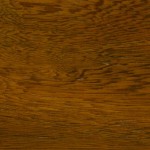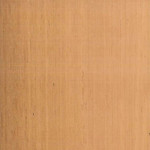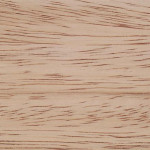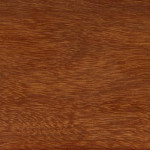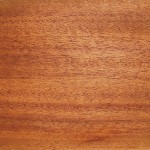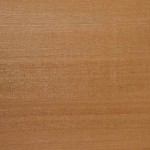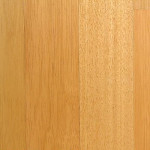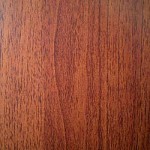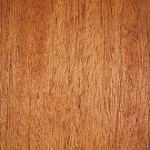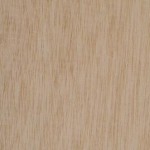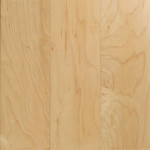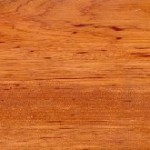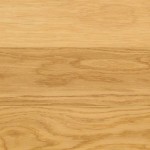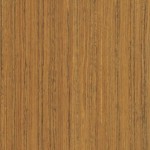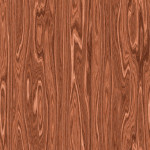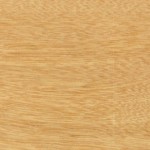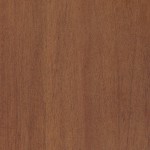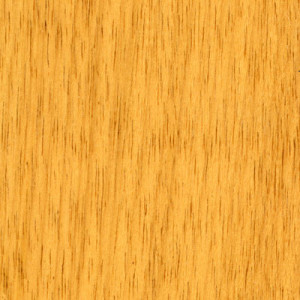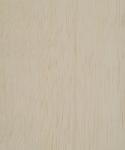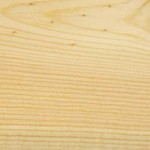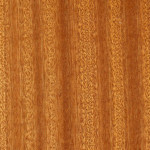Woods
Mas de 60 años de experiencia en la elaboración y comercialización de maderas preciosas. Somos pioneros en la innovación maderera, incorporando al mercado nacional una vasta gama de maderas preciosas procediente de diferentes países:
| Centro America: | Costa Rica, Guatemala, Honduras, Nicaragua, Panama |
| Norte America: | Canada , Estados Unidos |
| Sur America: | Argentina, Bolivia, Brasil, Chile, Colombia, Ecuador, Peru |
Ofrecemos gran variedad de especies de maderas: seca al aire, seca al horno, aserradas, cepilladas, elaboradas; para asi atender las distintas necesidades y exigencias del mercado. Aseguramos la calidad de nuestras especies ya que nos regimos bajo los estándares internacionales de la norma NHLA (National Hardwood Lumber Association). INFORMACION TECNICA DE CORTES DE MADERA 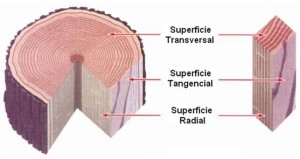
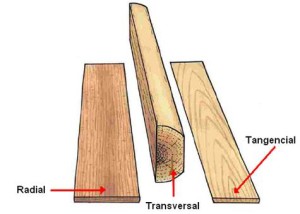
Tipos de madera y detalles de su especie
Scientific name: Common uncinatum Erisma: Cendrinho, quarubarana
Hometown:
South America
Characteristics
Whiteness Color: beige
Odor: No distinctive
Brightness: Medium
Veined: Intense
Heartwood color: light reddish brown
Taste: Indistinct
Grain: Straight right
Texture: Medium to coarse
Technical conditions
Workability: Easy to process mechanically, good surface finish
Preservation: Permeable
Durability: Low durability, especially in contact with soil
Drying: Pre-drying fast, it requires severe kiln schedule
Physical properties:
Apparent density at 12% moisture 590kg / m3
End uses:
Doors, windows, furniture in general, frames, veneer sheets, constructions
[/ultimate_info_table]
Scientific name: Common Switenia macrophylla: Mahogany Real, Big Leaf Mahogany Fijian
Hometown: Plantation Island Fiji, Pacific Ocean (West)
Characteristics
Whiteness Color: Beige White
Odor: not distinctive
Brightness: high
Veined: Attractive
Heartwood Color: deep red to brown
Taste: not distinctive
Grain: straight interlaced
Texture: fine to coarse
Technical conditions
Workability: Sawing is easy, good finish, easy to work with carpentry tools
Preservation: Not impregnable
Durability: resistant to fungal attack s, and moderately resistant to termites
Drying: Drying is normally
Physical properties:
Bulk density to 10 to 15% moisture, 570kg / m3
End uses:
General furniture and joinery, moldings, musical instruments, shipbuilding, decorative plates
[/ultimate_info_table]
Scientific name: Common catanaeformis Cedrelinga Screw, frog Cedro, Mara male seique
Origin: South America, Amazon region
Characteristics
Whiteness Color: Pink
Odor: Unpleasant
Brightness: medium to bright
Veined: medium to dark
Heartwood color: light brown
Taste: undetectable
Grain: straight interlaced
Texture: thick
Technical conditions
Workability: Easy to saw
Preservation: Moderately permeable
Durability: Good durability, resistant to wear and considerably resistance
Drying: Drying Recommended artificial light to avoid major defects
Physical properties:
640kg / m3
End uses:
Furniture and joinery, plywood, flooring, shipbuilding, packaging
[/ultimate_info_table]
Scientific name: Tabebuia spp Common: Lapacho, Tajibo, Guayacan
Origin: Central America and South America.
Characteristics
Color Sapwood: Yellowish White
Odor Away
Brightness: Medium
Marbled Classic Oak
Heartwood Color: olive brown to dark brown
Taste: absent
Grain: Straight
Texture: Fine
Technical conditions
Workability: Sawing requires using powerful computers. Desafilan saws quickly.
Durability: Classified as very resistant to the action of fungi and termites.
Drying: drying speed is slow.
Physical properties: Apparent density at 15% moisture 1050kg /M3
End use: furniture, joinery, decorative plates, stairs and moldings.
[/ultimate_info_table]
Scientific name: Khaya ivorensis Common: African Mahogany, Acajou
Hometown:West Central and Western Africa
Characteristics
Color Sapwood: yellowish cream White
Odor: No distinctive
Brightness: High
Veined: average Interlaced
Heartwood Color: pale pink or pale red
Taste: Indistinct
Grain: Straight
Texture: Fine
Technical conditions
Workability: sawing easy, and normally dull effect
Preservation: Not impregnable
Durability: Moderately durable against the action of fungi, termites sensitive, very attacked by marine borers
Drying: Drying is fast
Physical properties:
Apparent density at 12% moisture 490kg / m3
End uses:
Exterior carpentry, interior carpentry, plywood, decorative veneers, furniture and joinery, naval cosntrucción, light boats, planks of flooring
[/ultimate_info_table]
Scientific name: Common klaineana Aucomea: Okoume
Hometown: Central Africa, Gabon, Cameroon, Congo.
Characteristics
Color Sapwood: greyish white
Odor: No distinctive
Brightness: Pale
Veined: Medium
Heartwood Color: Pink Salmon
Bitter taste
Grain: Fine to Medium
Texture: Medium
Technical conditions
Workability: Sawing is easy
Preservation: Little Impregnable
Durability: very durable against the action of fungi, termites sensitive.
Drying: fast drying speed
Physical properties:
Apparent density at 12% moisture 430-440-450KG / M3
End uses:
Hapas decorative, plywood, moldings, baseboards, furniture friezes and joinery, packaging, pleasure boats.
[/ultimate_info_table]
Scientific name: Common spp Couratari: Maho
Hometown: South America, tropical zone
Characteristics
Color Sapwood: cream or white cream
Odor: Unpleasant
Brightness: Medium to shiny
Veined: Straight
Heartwood Color: Beige
Taste: Indistinct
Grain: Medium
Texture: Medium
Technical conditions
Workability: The machining presents no difficulties
Preservation: impregnable Wood
Durability: Poor resistance to the action of fungi, insects and termites
Drying: The drying speed is fast, is recommended immediately after its logging to prevent blue.
Physical properties:
12% density, 620kg / m3
End uses:
Interior carpentry, plywood, carpentry assembling, furniture, exterior carpentry, packing boxes, forms, toys.
[/ultimate_info_table]
Hometown:
Tropical regions of South America, Central America, Caribbean and the West Indies.
Characteristics
Color sapwood: undifferentiated
Odor: No distinctive
Brightness: Slight
Veined: Straight
Heartwood Color: Red golden Pardo
Taste: Indistinct
Grain: Medium
Texture: Uniform
Technical conditions
Workability: Sawing is easy, the blunt saws is normal
Preservation: Little impregnable
Durability: Moderately durable, against the action of fungi and termites
Drying: slow normal Varia
Physical properties:
Apparent density at 12% moisture 640kg / m3
End uses:
Interior woodwork, floors, stairs, moldings, decorative plates, panels, plywood, Blockboard, furniture, joinery, shipbuilding
Exterior carpentry: pretreated.
[/ultimate_info_table]
Scientific name: Cedrela odorata Common: Spanish Cedar
Hometown:
Central America, South America, Caribbean
Characteristics
Whiteness Color: Light brown to pink
Smell: Characteristic
Brightness: Medium
Veined: Arcos and fibers intertwined
Heartwood Color: Red brown
Bitter taste
Grain: Straight and half
Texture: Medium
Technical conditions
Workability: Sawing is easy; the presence of resin may dull the mountains and stay glued
Durability: Durable against the action of fungi moderately resistant insect
Drying: Quick dryingPhysical properties:Apparent density at 12% humidity 450 kg / m3
End uses:Plywood, cigar boxes, exterior joinery, moldings, furniture and joinery, sculpture, light carpentry, packaging, shipbuilding, musical instruments.
[/ultimate_info_table]
Scientific name: Common Virola spp: Virola, banak, blood, red cumala
Origin: Central America and tropical South America zone
Characteristics
Color sapwood: undifferentiated
Odor: No distinctive
Brightness: High
Veined: Low
Heartwood Color: Cream to pale brown
Taste: Indistinct
Grain: Straight
Texture: Medium
Technical conditions
Workability: Sawing is easy
Preservation: It is impregnable mediananmente
Durability: No durable against the action of fungi, termites and sensitive
Drying: slow drying
Physical properties:
Apparent density at 12% humidity 400 kg / m3
End uses:
Plywood, moldings, baseboards, current furniture, packing boxes of cigars.
[/ultimate_info_table]
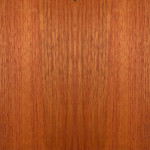 Scientific name: Hymenaea spp Common: Guapinol, Sugar Huayo, Paquio, Brazilian Cherry
Scientific name: Hymenaea spp Common: Guapinol, Sugar Huayo, Paquio, Brazilian Cherry
Origin: South America, the Caribbean and West Indies
Characteristics
Whiteness Color: Pink White
Odor Away
Brightness: Bright
Veined: assumptions arches
Heartwood Color: Pink brown to red brown
Taste: absent
Grain: Straight
Texture: Medium
Technical conditions
Workability: Sawing is easy but requires powerful computers
Preservation: Little impregnable
Durability: medium, against the action of fungi and termites
Drying: Normal speed
Physical properties:
Apparent density at 13% moisture 955-970kg / m3
End uses:
Furniture, joinery, decorative plates, floors, stairs, exterior carpentry, tool handles, shipbuilding, musical instruments
[/ultimate_info_table]
Scientific name: Acer rubrum Common: Soft Maple, Red Maple Leaf
Hometown:
Canada, Eastern United States
Characteristics
Whiteness Color: White
Odor: No distinctive
Brightness: Moderate
Veined: Low to medium
Heartwood Color: Light brown to gray
Taste: Indistinct
Grain: Mostly right
Texture: Fine
Technical conditions
Workability: Sawing is easy
Preservation: Moderately resistant impregnation
Durability: Slightly resitente attacks of fungi or insects, recommended for indoor use
Drying: Dry well in the air, but can produce bluish spots, recommended dry on camera at low temperatures.
Physical properties:
Apparent density at 12% moisture 430kg / m3
End uses:
Interior decorations, General joinery, decorative plates, furniture, flooring.
[/ultimate_info_table]
Scientific name: Common Calophyllum brasiliense: Santa Maria, Maria
Hometown:
Central America, in the tropical zone of South America, Caribbean and the Antilles
Characteristics
Whiteness Color: Beige
Odor: Strong characteristic
Brightness: Bright
Veined: Soft
Heartwood Color: Light brown
Taste: Astringent
Grain: Straight
Texture: Fine
Technical conditions
Workability: Easy to process mechanically, good surface finish is obtained
Preservation: Moderately permeable
Durability: A durability without treatment
Drying: Drying artificial in fairly quick time, program is required
Physical properties:
Apparent density at 14% moisture 610-650kg / m3
End uses:
doors, windows, furniture in general, frames, sheets of veneer, flooring, trims, furniture, carpentry, shipbuilding: light vessels, packaging
[/ultimate_info_table]
Scientific name: Common cearensis Amburana: Brazilian oak, ishpingo
Hometown:
South and west of the Amazon basin (Paraguay, Bolivia, Peru, Argentina, Brazil)
Characteristics
Color Sapwood: Yellowish white
Smell: Characteristic
Brightness: Medium
Veined: Intense
Color Heartwood: Yellowish brown
Taste: Indistinct
Grain: Interlocked
Texture: Medium
Technical conditions
Workability: Easy to process mechanically, good surface finish
Preservation: Moderately permeable
Durability: Low durability without preservation treatment
Drying: Pre-drying is slow, a soft kiln schedule is recommended to avoid major defects
Physical properties:
Apparent density at 14% moisture 480kg / m3
End uses:
Doors, windows, furniture in general, frames, parquet flooring, veneer sheets, construction, etc.
[/ultimate_info_table]
Title: Scientific: Tectona grandis Common: Teak
Hometown:
Native to Southeast Asia (India, Cambodia, Laos, Vietnam).
Guyana, Puerto Rico, Cuba, Haiti, Jamaica
Characteristics
Whiteness Color: Yellow White
Odor: Strong
Brightness: coppery highlights
Veined: Straight
Heartwood Color: yellow to dark brown
Taste: Indistinct
Grain: Coarse
Texture: Oily
Technical conditions
Workability: Sawing is more or less easy, saws desafilan quickly.
Preservation: It is not impregnable
Durability: Very durable against the action of fungi, moderately susceptible to termites
Drying: The speed is slow, but varies according to density
Physical properties:
Densisdad apparent 12% 650kg / m3
End uses:
Decorative veneers, furniture and carpentry, interior carpentry, exterior siding, light boats, parts in contact with the ground or water, turning, poles, curved pieces, acid resistant containers.
[/ultimate_info_table]
Scientific name: Common Swietenia macrophylla: Mahogany, Mara, Genuine Mahogany
Hometown:
Eastern part of Central America, Tropical South America Zone
Characteristics
Color Sapwood: Yellowish white
Smell: Special
Brightness: High
Veined: Sexy and sleek
Heartwood Color: Pink to reddish brown
Bitter taste
Grain: Straight crosslinked
Texture: Medium to fine
Technical conditions
Workability: Easy to brushing, sanding, good finish, easy to work with carpentry tools
Durability: durable, extremely resistant to treatment with preservatives
Drying: During the drying process the air, there is no twisting or cracking.
Physical properties:
Apparent density at 12% moisture 460kg / m3
End uses:
Furniture, joinery, decorative veneers, moldings, sporting goods, tool handles, plywood, musical instruments
[/ultimate_info_table]
Scientific name: Ocotea rubra Common: Louro Vermelho, Louro Red
Hometown: In the Amazon basin of South America, Guyana
Characteristics
Whiteness Color: pink or grayish
Odor: not distinctive
Brightness: Medium
Veined: slightly interlocked
Heartwood Color: pinkish brown
Taste: not distinctive
Grain: medium
Texture: Medium
Technical conditions
Workability: Sawing is easy
Preservation: It is not impregnable
Durability: durable and good frenta resistance to the action of fungi and termites
Drying: Drying dificila to perform, apparent deterioration tendency to split, slow speed
Physical properties:
15% 620kg / m3
End uses:
interior carpentry, exterior cladding, furniture and joinery, decorative veneers, plywood, turning, packaging, shipbuilding, bridges and boats.
[/ultimate_info_table]
Origin: Central America (Honduras, Costa Rica, Panama) North of the Amazon
Characteristics
Whiteness Color: White to yellow
Smell: Characteristic
Brightness: Average high
Veined: Dark streaks
Heartwood Color: brown yellow to reddish brown
Taste: Indistinct
Grain: Interlocked
Texture: Thick
Technical conditions
Workability: Sawing is difficult because of its hardness and requires the use of powerful computers.
Preservation: Impregnable to moderately resistant
Durability classified as very durable against the action of fungi and termites.
Drying: The drying rate is slow
Physical Properties: Bulk density at 15% moisture 1070kg / m3
End uses:
Floors, decks, travuesas, poles, bridges, build carpentry, shipbuilding, decorative veneer, tool handles.
[/ultimate_info_table]
Scientific name: Common Cariniana pyriformis: Abarco, bacu cachimbo
Origin: Colombia, Venezuela, Brazil
Characteristics
Whiteness Color: Light Brown
Odor: No distinctive
Brightness: Low to medium
Veined: Satin
Heartwood Color: Brown Pink
Taste: Indistinct
Grain: Straight
Texture: Medium
Technical conditions
Workability: Sawing is difficult because of its high silica content, requires working with powerful equipment.
Preservation: Little impregnable
Durability: I Ranked average resitencia against the action of fungi and good resistance to termites
Drying: slow speed
Physical properties:
Apparent density at 14% moisture 620kg / m3
End uses:
Floors, exterior carpentry, decorative veneers, plywood, joinery and furniture, carpentry assembly, shipbuilding.
[/ultimate_info_table]
Scientific name: Common Simarouba Amara: Aceituno, Olivo Negrito, Cedro Amargo
Hometown: South America, mainly in the northern part
Characteristics
Color sapwood: undifferentiated
Odor: Imperceptible
Brightness: Glossy
Veined: Soft
Heartwood Color: Creamy white to white yellow
Taste: lightly bitter
Grain: Straight, occasionally oily.
Texture: Thick and Lisa
Technical conditions
Workability: Light and soft to cut
Preservation: Pretty permeable to preserving solutions
Durability: very Softwood, moderates, pudrecedores resistance to attack by fungi and highly resistant to termite attack.
Drying: Good.
Physical properties:
Apparent density at 12% moisture 415KG / M3
End uses:
Tables liners, packaging, urns, toys, phosphorus, plywood, moldings
[/ultimate_info_table]
Scientific name: Pinus contorta Doug Commons: Canadian Redwood, Jack Pine, Shore Pine, Lodgepole pine.
Hometown:
Central-western United States and Canada
Characteristics
Color Sapwood:
Odor:
brightness:
Veined:
Heartwood Color:
Flavor:
grain:
texture:
Technical conditions
workability:
Durability: It is not resistant to decay.
End use: knots «lodgepole pine» are usually small, solid, quality No. 3C is excellent for furniture and helmets room. It is widely used in the manufacture of windows and trim.
[/ultimate_info_table]
Scientific name: Common Sapele: Sapele
Hometown: West, Central and East Africa Characteristics
Whiteness Color: white gray to cream
Odor: No distinctive
Brightness: Medium to high
Veined: Interlaced
Heartwood Color: Reddish brown
Taste: Indistinct
Grain: Fine to medium
Texture: Uniform
Technical conditions
Workability: Sawing is easy
Preservation: Little impregnable
Durability: Moderately durable against the action of fungi and insects
Drying: The speed is normal
Physical properties:
Apparent density at 13% moisture 640kg / m3
End uses: Decorative veneers, plywood, handrails, balustrades,
furniture, cabinetry, exterior carpentry, shipbuilding: luxury boats.
[/ultimate_info_table]

